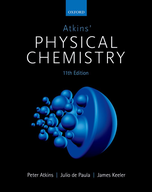?Refer to Fig. 11A.9, which depicts a Michelson interferometer. The mirror
Chapter 11, Problem P11A.12(choose chapter or problem)
Refer to Fig. 11A.9, which depicts a Michelson interferometer. The mirror \(\mathbf{M}_{1}\) moves in discrete distance increments, so the path difference p is also incremented in discrete steps. Explore the effect of increasing the step size on the shape of the interferogram for a monochromatic beam of wavenumber \(\tilde{\boldsymbol{V}}\) and intensity \(I_{0}\). That is, draw plots of \(I(p) / I_{0}\) against \(\tilde{v} p\), each with a different number of data points spanning the same total distance path taken by the movable mirror \(\mathbf{M}_{1}\).
Text Transcription:
M_1
tildeV
I_0
Ip/I_0
Tildevp
Unfortunately, we don't have that question answered yet. But you can get it answered in just 5 hours by Logging in or Becoming a subscriber.
Becoming a subscriber
Or look for another answer
